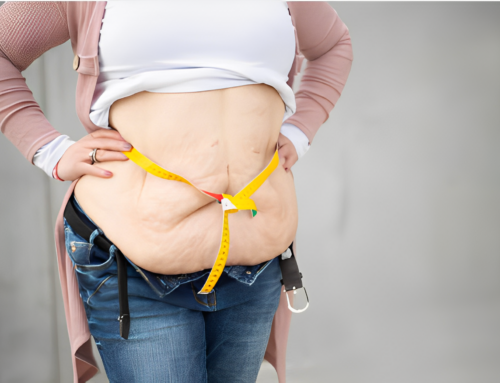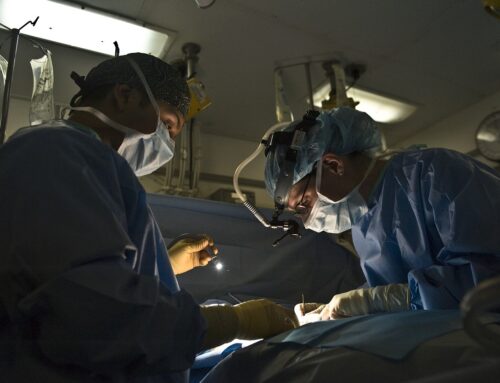What is a lipoma?
Lipomas are benign soft tissue tumors. But what is a lipoma exactly? A lipoma is a fatty tumor: a round lump of fatty tissue that grows beneath the skin. Lipomas can occur anywhere on the body, but you are most likely to develop a lipoma on your back, chest, arms, shoulders or neck.
Lipomas can be either circular or oval in shape. Because they are made from fat cells, lipomas are essentially fatty lumps: they move easily when you touch them, they feel soft to the touch and are seldom painful. A ct scan or other diagnostic tool might be required to diagnose a lipoma and rule out other possibilities such as cysts.
What causes lipomas?
Lipomas are incredibly common. It is estimated than one in every thousand people will develop a lipoma. They occur in all genders and at all ages. However, it is more common to diagnose a lipoma in people aged 40 to 60 years, and women are slightly more at risk of developing a lipoma than men.
It is not clear what makes lipomas grow. However, they do run in families so if someone in your family has a lipoma then you are more likely to develop one. In addition, there are certain medical conditions that can cause multiple lipomas to grow. These medical conditions that cause lipomas include:
- Dercum’s disease
- Gardner syndrome
- Familial multiple lipomatosis
- Madelung’s disease
Are lipomas dangerous?
Lipomas grow slowly and are benign (not cancerous) and seldom require treatment. However, if a lipoma is bothering you, please contact us to book a consultation to discuss our lipoma removal procedure. If a lipoma is near nerve endings or has blood vessels running through it, it might cause you pain and discomfort, thereby requiring removal.
How are lipomas removed?
Lipomas are surgically removed by cutting them out. It is a straightforward procedure that takes approximately 20 to 45 minutes.
The procedure is quick, safe, and effective; patients are usually able to return home that same day. It is very rare for a lipoma to recur in the same place once one has been removed surgically. The procedure can leave some bruising and scarring, but an approach called minimal excision extraction can minimise the resultant scarring.
A second treatment option is liposuction. A needle and syringe is used to extract the fatty tissue from beneath the skin. This method can be used to reduce the size of very large lipomas. However, it is not a viable or practical option in most cases.
If you would like to discuss treatment options, please contact us for expert medical advice.
What are the risks of lipoma removal?
A lipoma removal procedure, like all surgeries, comes with some risks. However, there are minimal risks associated with lipoma removal, and most of these are easily minimised. Apart from developing a scar, there is a very small risk of bleeding and/or infection as a result of the incision.
If a lipoma has developed near nerves, there is a risk of nerve damage which could cause numbness. Your surgeon will discuss this risk with you if your lipoma is near any nerves.
Recovery after lipoma removal
In most cases you will only require a local anaesthetic for lipoma removal procedures. This means that you are able to return home that same day. A waterproof dressing means that you will be able to bath or shower with ease.
You might have to return shortly thereafter (a week to ten days) to have stitches removed. Your surgeon will let you know if this is necessary in your case, or whether dissolving stitches were used.
Most patients are able to return to work the day after their lipoma removal surgery. However, we advise all patients to refrain from heavy exercise or any strenuous activity for two weeks following surgery. This is because it usually takes the wound 10 to 14 days to heal completely.
Ideally, the following activities should be avoided for 28 days after lipoma removal:
- swimming
- watersports
- exercise
- stretching
- heavy lifting
- saunas
- steam rooms
In other words, for a month afterwards it is best to avoid all activities that induce sweating or cause your clothing to rub against the wound. Please contact us to discuss any questions or concerns you might have.
Lipoma removal at Mastakov Surgery
Dr Mastakov is an experienced and highly-regarded General Surgeon. He has accumulated more than 25 years’ experience in performing general surgery and surgical procedures and providing surgical care in both the private and public health care spheres.
As a practice, Mastakov surgery places great importance on providing superb patient care. We use the latest developments in medical technology and surgical techniques to provide all our patients with the best possible quality of care.
We offer a wide range of general surgeries. This includes procedures for both benign and malignant skin and soft tissue tumors. If you have a lump that you would like examined, please contact us to book the next available consultation. Not only will you receive an accurate diagnosis but – no matter the diagnostic result – we will be able to provide effective treatment options. The sooner you seek medical advice, the less chance there is for that lump to grow and possibly worsen.






Leave a Comment